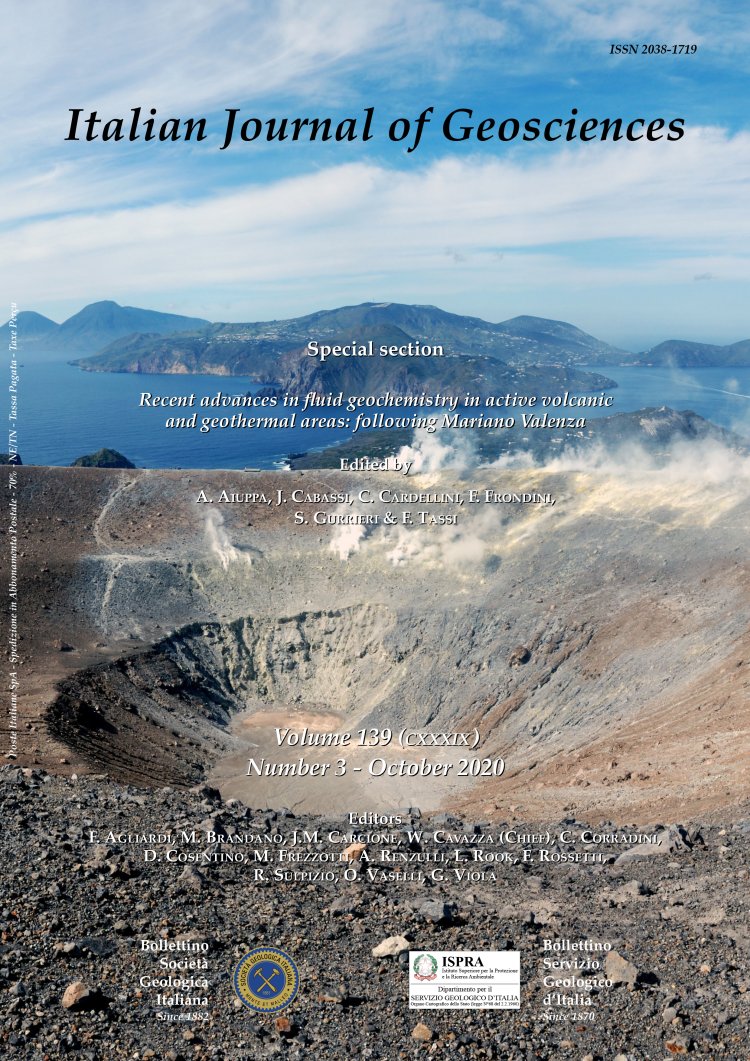Abstract
This work presents chemical and isotopic (δ13C-CO2, δ13C-CH4, 3He, 4He, 20Ne, 40Ar, 36Ar, δ18O and δD) data of fluid discharges from Colpitas-Taapaca volcanic-hydrothermal system, located close to the Taapaca Volcanic Complex, with the aim to investigate the physical-chemical conditions of the fluid source and to provide a preliminary evaluation of the geothermic potential of the study area. Colpitas thermal springs (to 56 °C) and part of the cold springs (≤18°C) from this area have a Na+-Cl- composition and Total Dissolved Solids (TDS) values (from 6,059 to 19,118 mg/L). Putre springs also show a Na +-Cl -composition, TDS values up to 7,887 mg/L, and outlet temperatures from 21 to 31 °C. Colpitas cold springs, with a Ca2+-SO42- composition and relatively low TDS values (≤1,350 mg/L), are likely produced by interaction of shallow water with uprising H2S- rich hydrothermal gases. This process is likely also controlling the chemistry of Jurase thermal springs, which have the highest outlet temperatures of the study area (up to 68 °C), a Ca2+-SO42- composition and TDS values ≤2,355 mg/L. Eventually, Las Cuevas springs have temperatures up to 36 °C, a Na+-HCO3- composition and low TDS values (≤1,067 mg/L), typical features of springs related to a shallow aquifer. The δ18O-H2O and δD-H2O values indicate that all waters have a dominant meteoric origin. Enrichments in 18O and D shown by Colpitas and Putre thermal waters are likely due to steam loss and water- rock interaction, masking a possible direct steam contribution from magmatic degassing. Gas emissions from Colpitas bubbling pools are dominated by CO2, with significant concentrations of CH4, H2S and H2. The Rc/Ra values (up to 2.04) of Colpitas gases indicate a significant contribution of magmatic to mantle He, whereas the high CO2/ 3He ratios, combined with d 13C-CO2 values ranging from -7.66 to -5.63 ‰ vs. PDB, imply a dominant crustal CO2 source, mostly involving limestone. Estimated temperatures based on the composition of waters and gases from Colpitas are up to 215 °C. Higher temperatures (240 °C) are estimated for Putre thermal waters, although these waters, as well as those from Jurase and Las Cuevas, are too immature for a reliable application of geothermometric techniques. Based on the theoretical reservoir temperature and the measured Cl total output, the thermal energy released from Colpitas thermal area is estimated at up to 13.9 Mw. Such results suggest the occurrence of a promising heat source, possibly related to Taapaca volcanic complex, and encourage the development of future research based on combined geophysical and geochemical approaches, in order to provide a reliable evaluation of the geothermal potential of the whole area.
Keywords
Get Full Text
